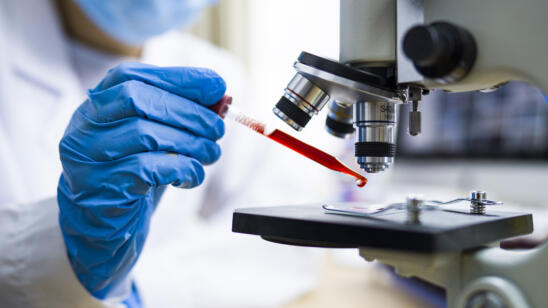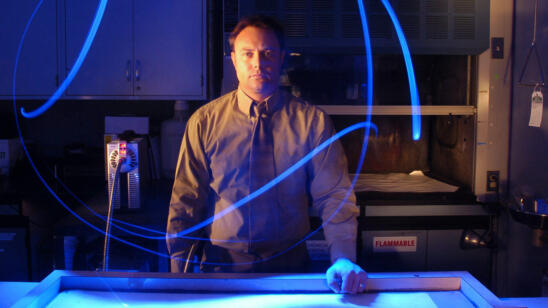Antoinette T. Campbell, a forensic scientist in Philadelphia, founded the nonprofit Association of Women in Forensic Science in 2010 to connect people and organizations with an interest in forensics and provide science, technology, engineering and math (STEM) programs for youth.
Campbell spoke with A&E True Crime about how she shares her passion for her work and what it’s like being one of few Black women in forensics.
How did you get into forensic science?
I got into it by accident. I attended Temple University and majored in chemistry in 2000. My junior year, I went to a career fair, interviewed for an analytical chemist job and found out the police department hired chemists. I didn’t even know that was an option. All these years later, I come across a lot of students who also don’t know they have options to work as chemists [in different fields]. It hasn’t changed.
[Stream episodes of Cold Case Files in the A&E app. And catch new episodes Fridays at 9/8c. on A&E.]
What kind of work do you do?
I worked in forensic drug chemistry, analyzing drug evidence submitted by law enforcement. We had to determine the presence of substances like cocaine, marijuana, oxycodone. Now I don’t work in a lab anymore, I work in quality assurance. That is as important, or even more important, than the scientific and technical side, because quality assurance ensures that forensic scientists are in compliance with policy and national accreditation standards for labs.
What do you like best about your work?
Going to court as an expert witness, because you see how it all really works. You have a big responsibility to make sure that when you’re analyzing evidence, you’re doing the right thing. You’re taking your time and you’re not being sloppy. You’re taking it seriously, because this is somebody’s life on the line.
Data shows women are prevalent in forensics, but there are few Black and brown women. What has that been like for you?
I always felt like an outsider. I didn’t have a mentor in college, and I don’t meet a lot of Black women in the field. I can count on one hand how many Black women [in forensics] are active on social media. Even if there are women in forensics, in the professional organizations you see a lot of white men as executives. You don’t see representation and you don’t see diversity.
Why is that?
Young [Black and brown] people don’t see people that look like them in science. Maybe they also feel intimidated by science and math. Depending where they grow up, their school may not have a strong STEM program. And even if the resources are there, it’s about them not having access and not knowing about it.
What led you to create the association?
I started with Club Philly Forensics [in 2010], a forensic science, drug and violence education program for youths ages 12 to 18]. I was running into a lot of young people interested in forensic science, and I felt the need to get more involved with educating and doing outreach. I wanted to do something for the community.
I was doing my own advertising and putting out [calls for] registration in recreation centers and churches. I had friends with forensic science experience who helped me with workshops and hands-on activities with the kids. It started taking off, and I was able to form partnerships and collaborations with organizations that were doing STEM outreach and programs. I also turned to coaching and mentoring college students who were reaching out. I just feel like it was a calling from God. This is something I had to do.
Did you encounter obstacles along the way?
I am used to doing what I have to do to figure stuff out. The hardest thing was working full-time and also being a single parent. But I did have the support from my friends and the community. People would show up to my classes and tell me how proud they were that I was doing this.
What kind of resources does the association provide?
We have webinars with a lot of different speakers. We had one in December 2021 with a crime laboratory technician who talked about crime scene investigation and evidence management. I have been doing webinars on how to become a forensic scientist, and I am launching a new course about that in the spring that is more in depth. It will touch on all the questions and feedback and issues that I see people struggling with.
I am also active on social media: TikTok, Instagram and Facebook. Kids like TikTok, a lot of my Instagram followers are millennials, and Facebook is for older people. I have people following me from all over the world: Nigeria, Australia, Italy, Canada, Morocco.
What are your future goals?
In May 2021 I launched my apparel brand, Street Forensics. I’m excited about that and I want to grow that more. I also want to continue to expand [the association] and be connected to global issues. Missing persons, sexual assault, gun violence, cybercrime…that is all connected and is all part of forensics.
Does the general public have misconceptions about forensic science?
People don’t understand that there are so many disciplines in forensic science and we all have different jobs. The evidence is assigned to different experts. Also, people don’t understand how long it takes to analyze evidence. Some people think it’s glamorous and fun.
[Among the general public] there are morbid people obsessed with death, but it’s very different seeing victims on TV. This is real, this is not like TV.
Has forensic science changed over the last 20 years?
I am not in the DNA field, but technology is advancing in that field rapidly. Also, it’s good to see that research is getting taken seriously. A lot of forensic scientists don’t have the opportunity to do research, but there are agencies that encourage it, like the National Institute of Justice and the Forensic Technology Center of Excellence.
Anything else you want to add?
What I do is for everybody. I am a woman and I wanted to see more women and girls getting into forensics, but it doesn’t take away from me knowing the importance of having men and boys in forensics, too.
Related Features:
Frances Glessner Lee: The Mother of Forensic Science
Bessie Blount Griffin: A Black Woman’s Journey to Pioneering Forensic Scientist


